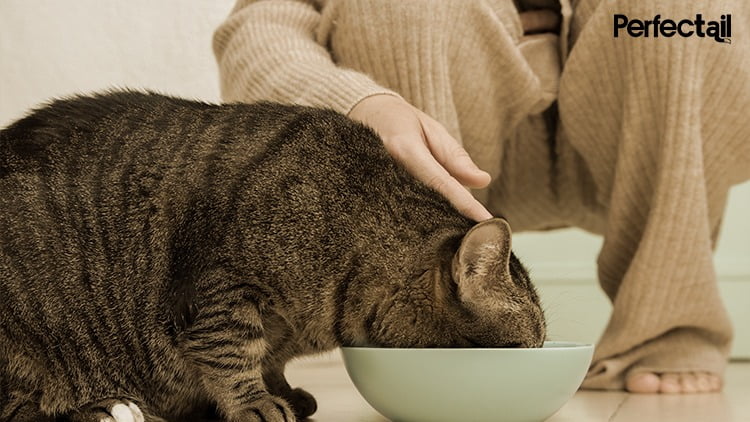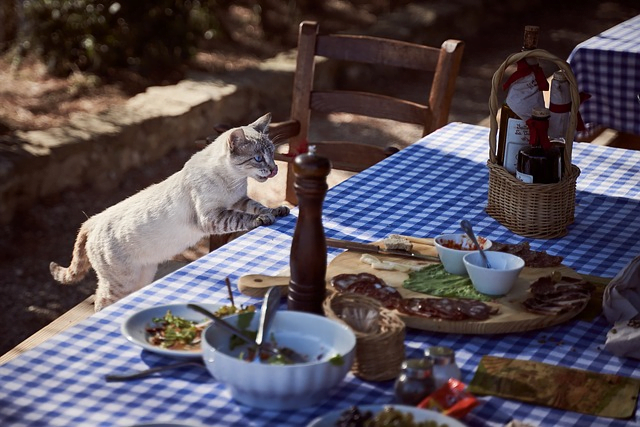
Homemade Cat Food Recipes: Nutritious and Delicious Meals for Your Furry Friend
As cat owners, we want to provide our furry friends with the best nutrition possible. While commercial cat foods offer convenience, homemade cat food allows you to control the ingredients and cater to your cat’s needs.
With some planning and preparation, you can create tasty, balanced meals for your cat in your kitchen. Now we will explore the benefits of homemade cat food and provide recipes for nutritious blends that your cat will love.

The Benefits of Homemade
Going the homemade route offers several advantages over store-bought cat foods:
- You can choose quality ingredients. You decide exactly what goes into your cat’s meals by making cat food yourself. You can select premium proteins, healthy fats, and fresh fruits/veggies.
- It’s tailored to your cat. If your cat has food sensitivities or needs a special diet, homemade food easily avoids problem ingredients.
- Better flavor. Home cooking often brings out more appetizing flavors than commercial processing does.
- No questionable additives. Many mass-produced cat foods contain additives like artificial colors, flavors, and preservatives. Homemade food has no mystery ingredients.
- Cost savings. Depending on the recipes and ingredients, homemade food can be cheaper than branded cat foods.
Following Feline Nutrition Guidelines
When formulating homemade cat food recipes, there are some key feline nutrition principles to follow:
- Lots of animal protein. Cats need plenty of protein from meat, poultry, fish, or eggs. This provides essential amino acids.
- Moderate fat. Cats do well on moderately higher fat than humans. This gives them energy and supports skin/coat health.
- Minimal carbs. Cats have limited ability to digest carbs. Homemade recipes should focus on proteins and fats.
- Calcium/phosphorus balance. For proper bone health, the Ca:P ratio should be between 1:1 to 2:1.
- Vitamin supplements. Homemade foods may be deficient in certain vitamins, so supplements are often needed. Check with your vet.
- Hydration. Add wet food or water to homemade recipes to ensure your cat gets enough fluids.
With these nutrition guidelines, look at some healthy homemade cat food recipes.
Nutritious Meat-Based Recipes
Most homemade cat food recipes revolve around a protein source. Here are some savory recipes focused on different meats:
Chicken Recipe:
- 2 pounds ground chicken (cooked)
- 1 cup cooked brown rice
- 2.5 cups baby spinach (chopped)
- 2 eggs
- Salmon oil (for omega 3s)
- Multi-vitamin supplement
Blend ingredients, portion into meals, and refrigerate for up to 4 days.
Lamb Recipe:
- 1 pound ground lamb (cooked, drained)
- 1/2 cup cooked barley
- 1/3 cup carrot (cooked and mashed)
- 1 egg
- 1 tsp salmon oil
- Multi-vitamin supplement
Mix ingredients, divide into single servings, and freeze portions later.
Fish Recipe:
- 6 oz tuna (canned in water, drained)
- 1 cup cooked quinoa
- 1/2 cup edamame beans
- 2 tbsp goat milk yogurt
- 1 egg
- Fish oil capsule (for omega 3s)
- Vitamin supplement
Process everything together until smooth. Refrigerate portions and serve within 2 days.
Delicious Non-Meat Recipes
For cats that need a non-meat diet, there are also great options:
Vegetarian Recipe:
- 1 cup cooked brown rice
- 1/2 cup cooked carrots
- 1/2 cup cooked peas
- 2 eggs
- 2 tbsp nut or seed butter
- Calcium supplement
- Taurine supplement
Blend ingredients to a smooth consistency. Portion out meals and refrigerate.
Vegan Recipe:
- 1 cup cooked quinoa
- 1/2 cup garbanzo beans
- 1/2 cup tofu (crumbled)
- 1/4 cup broccoli
- 2 tbsp coconut oil
- Vegan vitamin supplement
- Taurine supplement
Process everything together until the mixture is smooth. Divide into single servings and freeze.
Satisfy Your Cat’s Cravings
When preparing homemade cat foods, don’t forget these flavor boosters:
- Broths: Chicken, beef, or fish broths add savory flavor.
- Herbs: Dried catnip, thyme, oregano, and rosemary add an aromatic taste.
- Spices: Turmeric, cinnamon, and cumin provide warming spice.
- Flavor oils: Salmon oil and coconut oil lend signature tastes.
- Extras: Parmesan cheese, nutritional yeast, and masa flour boost umami flavors.
Follow Storage and Handling Best Practices
To keep homemade cat foods safe:
- Refrigerate fresh food for up to 4 days.
- Freeze meal portions for longest shelf life of up to 3 months.
- When reheating, reheat fully until steaming hot.
- Don’t save leftovers from your cat’s bowl. Discard uneaten portions.
- Wash all dishes, bowls, and utensils thoroughly after use.
- Date and label all homemade batches. Use the oldest batches first.
Whipping Up Nourishing Homemade Meals
Preparing homemade meals allows cat owners to take control of their feline’s diet and cater to their health needs. While it does require more effort than pouring kibble from a bag, the benefits of tailored nutrition and pure ingredients can be immense.
For cats with special requirements, homemade food may be one of the best options. Consult with your veterinarian and pet healthcare services to formulate recipes that provide complete nutrition.
With proper planning and care, homemade food can be a nourishing pet care service you provide for your beloved cat.

Pingback: Pet Care Tips: 8 Things to Keep in Mind While Planning Pet Relocation, Travelling with Pets. - Perfectail